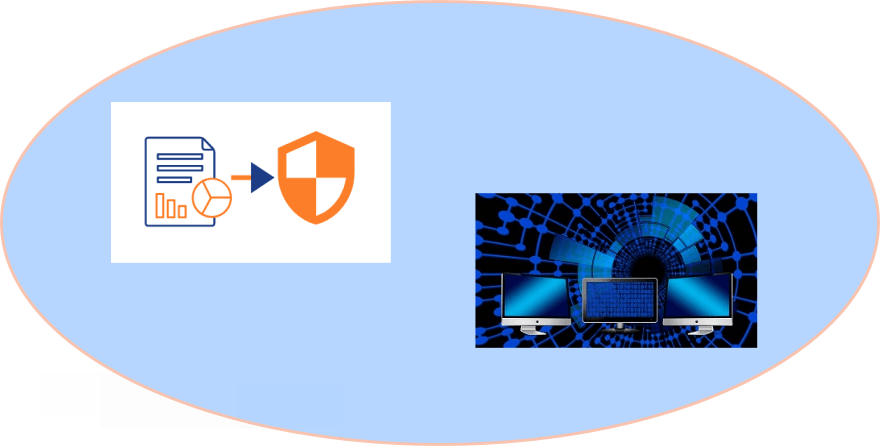In today’s dynamic environment, managing risk becomes necessary and at the same time is difficult to implement. Lack of sufficient intelligence or improper security tools can make managing risks impossible. Artificial Intelligence (AI) acts as a valuable tool in managing risks and augmenting physical security with a more proactive approach.
AI helps in making the complex decision-making processes much easier, which is why it is considered to be a catalyst for transformation in whichever industry it is applied. AI allows humans/teams to convert time-consuming tasks into more efficient and effective ones by giving them an in-depth knowledge of the processes that weren’t available before. Machine Learning (ML) models in AI can self-learn and improve their knowledge over time by using as much as data possible. ML also plays a prominent role in mitigating risks across the enterprise. Today, AI is largely being used to create algorithms and tools that help companies to monitor and analyze behavior and activities in real-time.
Using ML models for risk identification
AI is still in the developmental stages vis-a-vis risk identification and mitigation, but, experts say that it can be used to mitigate risk in key areas where ML models can be built to predict the likelihood of an individual or organization making any frauds or causing any kind of risk to the company.
ML models have the ability to analyze large amounts of data that include both structured and unstructured data that improve analytical capabilities involved in risk management and compliance allowing the decision-makers to identify risks well in advance in an effective manner saving time and allowing teams to make more informed decisions.
Several AI applications are being used in the financial services companies that can identify patterns and connections that humans can’t, thereby improving financial business processes and minimizing risks in the banking sector.
AI-based analytical platforms help in managing supplier risks by integrating all the information about different suppliers across regions and different parts of the world based on the risk they might cause to the company. AI systems can also be trained to identify, monitor and keep away all types of cyber-attacks and data breaches.
Detecting security blind spots
AI-based tools and security systems can detect threats that human eye can miss. AI-powered systems can see and hear everything and gather data from all corners of the different processes running in an enterprise ecosystem. This means that the AI system doesn’t miss single unauthorized access or an invalid user or a data breach or any type of threat that may cause harm to the process. AI surpasses all the human limitations that can hinder the security systems and integrate risk from different departments into specific categories so that the security team can easily understand them and take necessary action.
Creating a risk-adaptive environment
Physical security solutions have not proved to be as beneficial as AI-based access control systems as these access control system can identify abnormal events, inside threats, harmful situations and quickly adjust access permissions. Thus, AI helps in creating a risk-adaptive access control environment.
AI, when applied to access control systems, can identify abnormal activities such as wrong location access, unauthorized user, and other threats. The Risk-adaptive environment allows to prevent people from entering any wrong or unauthorized area where a non-obvious danger exists, and it also enables the first responder with the right credentials to access a restricted area in case of any risk or threat.
AI helps in detecting real-time risks
With emerging AI-based applications, companies are generating large amounts of contextual data in the form of videos, facial recognition, thumb impressions and sentiment analysis – where there is a possibility of ignoring some crucial information.
Usually, attention spans of humans are very less, and they can easily get bored of continuously monitoring and surveying the cameras and running through several videos and clips, but with AI this is not possible as it doesn’t get bored or distracted while gathering or consuming data. It can help in effectively identify potential risk well in advance and determine a threat before any kind of breach occurs. Thus, AI-based systems can focus on detecting real-time risks and show possible solutions for them.
There are cases when alarm operators get false alarms and the operators get confused as which are the correct ones to react upon and which are the false ones to ignore.
Beyond the data overflow, people looking after security systems can suffer from ‘alarm fatigue’. The main reason being too many false alarms, and insufficient early warnings that consumes maximum time and due to which risks may be ignored. AI helps in identifying the right alarms and ignoring the false ones, thus, saving time and allowing officers to work on the right risks.
Artificial intelligence, Machine learning and Natural Language Processing are gaining much importance in various sectors of business and can be seen in several processes inside a company. Artificial intelligence helps in making risk management perfectly align with other processes and also helps in aligning and evaluating unstructured data. In the coming days, AI-powered tools could make a big difference in identifying and mitigating risks.

